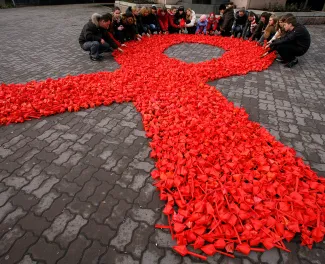

Despite the progress made in reducing the spread of HIV, it should be remembered that the virus remains a present threat. In 2021, about 1.5 million people became infected with HIV worldwide. Experts believe nearly one in five people living with HIV don’t know that they’re HIV positive. Regions affected by HIV infection more recently haven’t seen the same reduction in transmission rates that the United States and sub-Saharan Africa have. In Central Asia and Eastern Europe, for example, the annual infection rate has risen by 48 percent between 2010 and 2021.
Citing general success, some policymakers have suggested cutting funding for AIDS programs such as the U.S. President's Emergency Plan for AIDS Relief (PEPFAR)—which celebrated twenty years in January 2023. PEPFAR is responsible for saving over twenty million lives since its inception. But donors such as Bill Gates, whose philanthropic organization has continued to contribute hundreds of millions of dollars to fighting HIV/AIDS, argue that complacency could lead to a mass resurgence of the virus. The story of AIDS has shown that each of those steps—from patient activism to medical research to unified international effort—is necessary to successfully combat the next infectious disease.